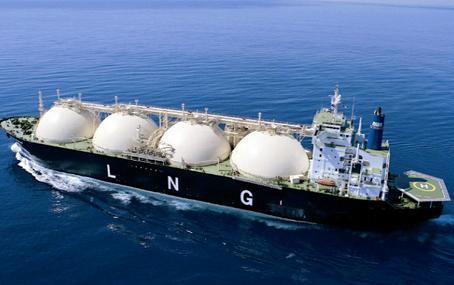Liquefied Natural Gas (LNG) is natural gas that has been cooled to a liquid state, at about -260° Fahrenheit, for shipping and storage. The volume of natural gas in its liquid state is about 600 times smaller than its volume in its gaseous state. This dramatic reduction allows it to be shipped safely and efficiently aboard specially designed LNG vessels.
LNG is the cleanest of the fossil fuels. It doesn’t emit soot, dust or particulates and produces 40% less carbon dioxide than coal and 30% less than oil. Since the world moves towards net zero carbon emissions and renewable energy sources, LNG’s growth is steadily positive.

Stainless Steel Piping and LNG Industry
Stainless Steel Piping provides added strength, hardness, and corrosion resistance, helping LNG facilities better protect their production assets, including at very cryogenic temperatures.
There are some important considerations when using stainless steel.
1.Material Selection: Common stainless-steel grades used for LNG piping application include 304 and 316 stainless steel. These grades are known for their corrosion resistance as well as competitive cost and are suitable for many gas distribution systems.
2.Pressure Rating: Ensure that the stainless steel has an adequate pressure rating for the specific natural gas distribution system. The pressure rating should meet or exceed the maximum pressure the system will experience during normal operation.
3.Pipe Size: Choose the appropriate pipe size based on the gas flow rate and system requirements. The pipe size should be calculated to minimize pressure drop and ensure efficient gas flow.
4.Fittings and Joints: Use compatible stainless steel fittings and joints designed for natural gas applications. Properly installed and sealed fittings are crucial to prevent gas leaks.
5.Codes and Standards: Comply with local building codes, regulations, and industry standards that govern the installation of natural gas piping systems. In many regions, there are specific codes that outline the requirements for natural gas piping, including material selection and installation procedures.
6.Installation: Ensure that the stainless steel pipe is installed correctly by trained and qualified professionals. Proper installation practices are critical to the safety and integrity of the natural gas distribution system.
7.Inspection and Testing: Conduct thorough inspection and pressure testing of the gas piping system to check for leaks or weaknesses in the connections. Pressure testing is typically performed using a gas-specific solution to identify any leaks.
8.Maintenance: Regularly inspect and maintain the stainless steel LNG pipeline system to ensure its continued integrity. This includes checking for corrosion, inspecting fittings and connections, and addressing any issues promptly.
Hengyang Piping and LNG Industry
Hengyang Piping’s complete supply chain network enables us to offer every project with the finest solution. One-stop souring for liquid natural gas pipelines, fittings, flanges and valves approved by world classification societies including ABS, LR, BV, DNV-GL, KR.